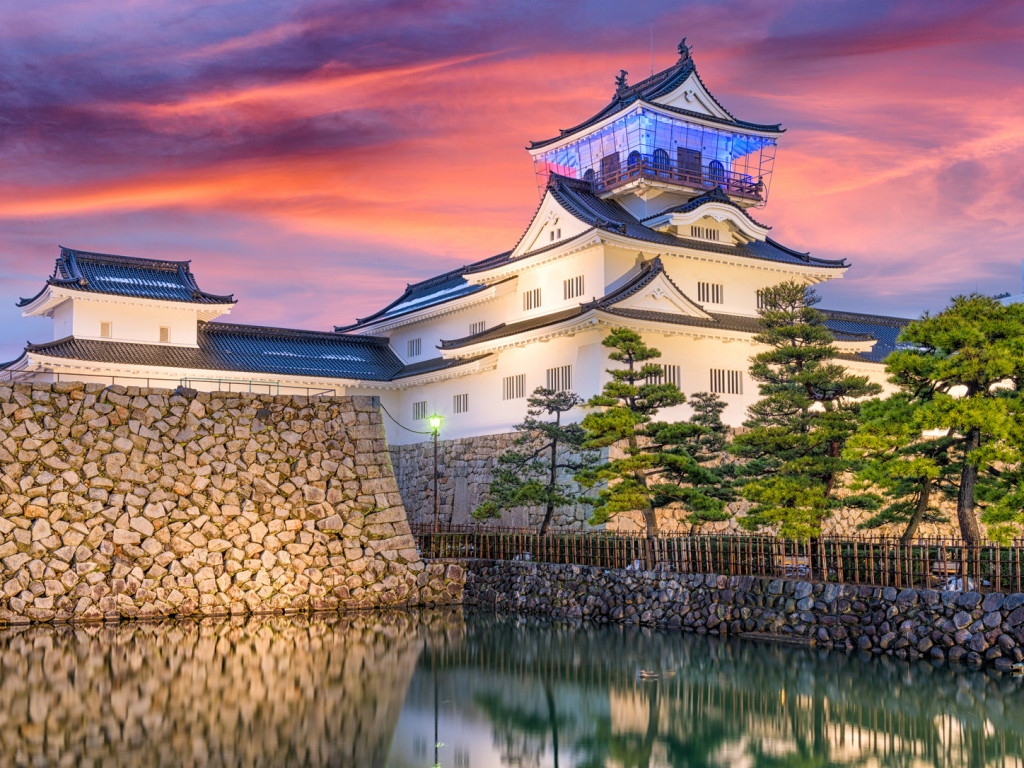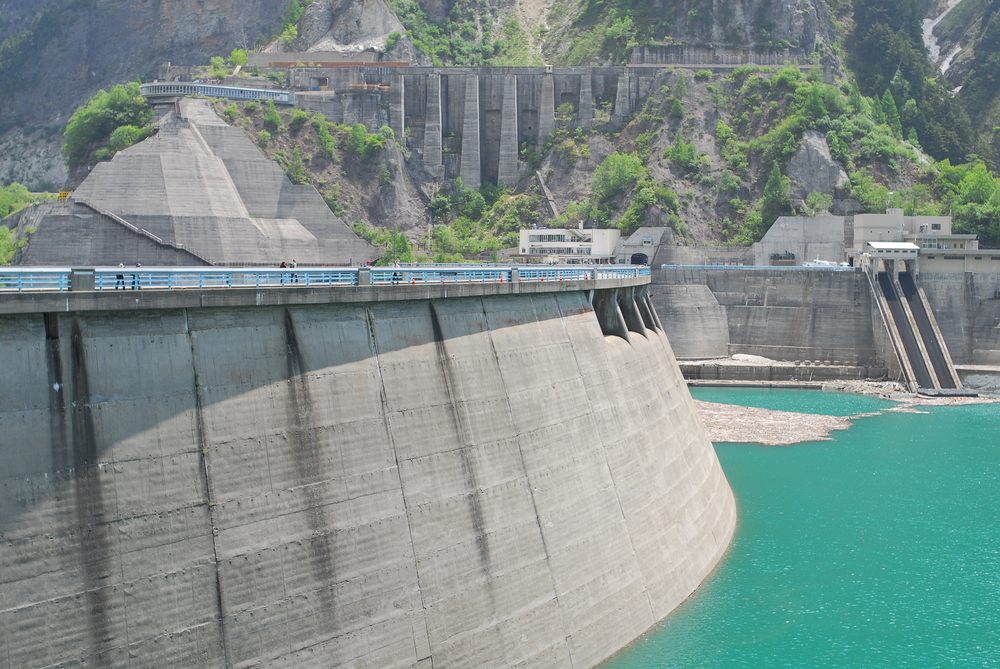Seen as the gateway to the Northern Japanese Alps and the Sea of Japan, Toyama is a captivating, laid-back city in the Hokuriku region that celebrates its past while embracing the future. Despite often being overlooked by tourists (who tend to favor Kanazawa, its neighboring city), Toyama has a lot going for it with an abundance of greenery, charming rivers, modern buildings, and breathtaking views of the Tateyama mountain range. On top of all that, there are numerous temples, shrines, parks, museums, and some delectable local dishes.
From Ashes to Award-Winning
It’s all a far cry from how the place looked 73 years ago. On August 1, 1945, an incendiary raid by 173 B-29 bombers left Toyama, a central location for aluminum, ball-bearing, and steel production, in tatters. The attack obliterated more than 99 percent of the city and left almost the entire population of survivors homeless.
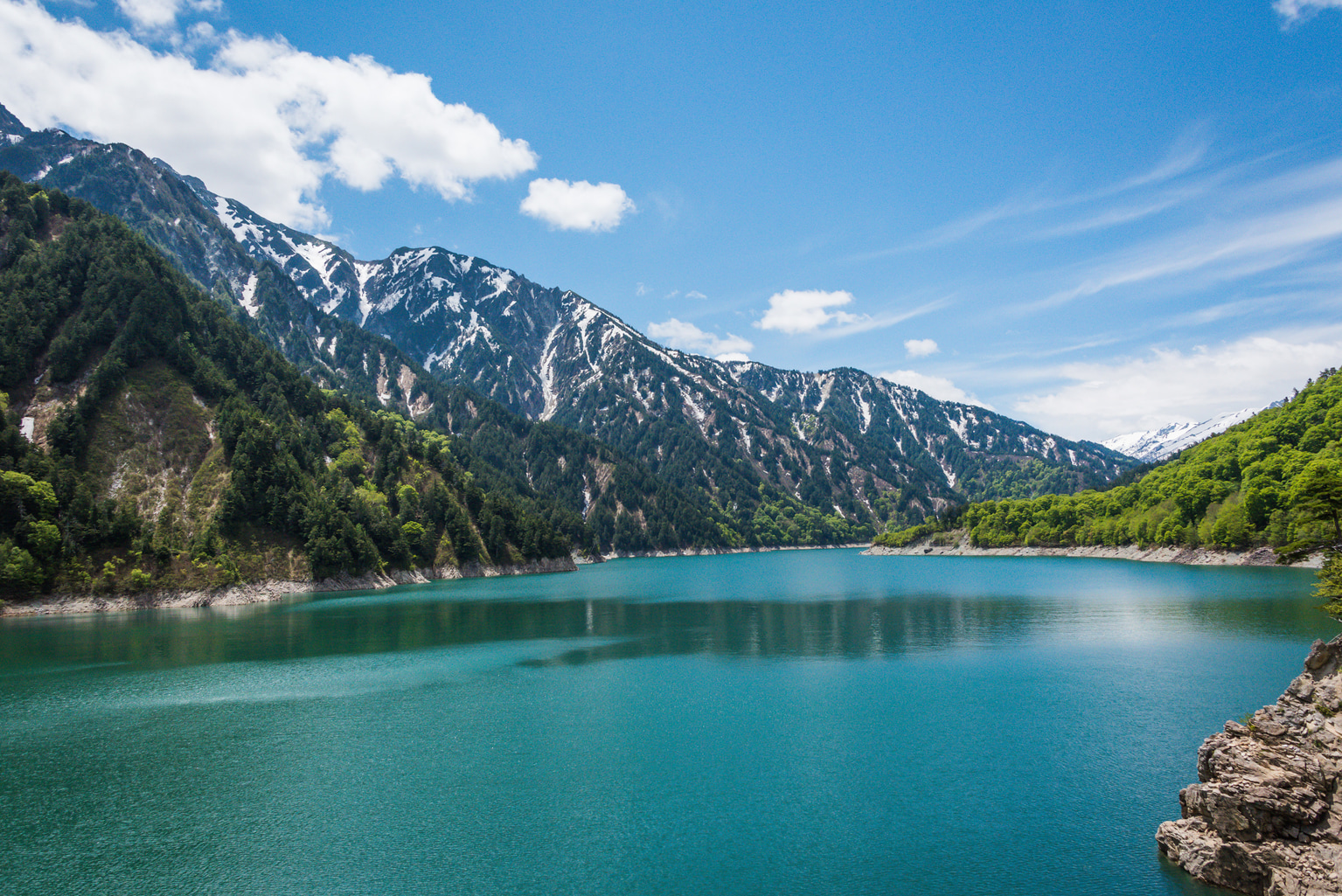
Lake Kurobe
Down but not out, Toyama’s speedy recovery from the devastation was a testament to the resilience and fortitude of its people. From the ashes, a new city emerged, one that was compact yet spacious with an excellent transportation system. Through the years it has become one of the most technologically advanced and eco-friendly cities in Japan, winning many awards.
It was all made possible thanks to the hard work and perseverance of local officials and ordinary citizens. Every year on August 1, the sacrifices and efforts they made for the city are celebrated at the spectacular Kita-Nippon Shimbun Toyama Summer Fireworks Festival when around 3,000 multi-colored flowers of light unfurl in the sky. It’s also an occasion for people to pay their respects for those that passed away during the raid.
One of the most iconic buildings reconstructed after World War II was the faux reproduction of Toyama Castle’s donjon (the inner tower of the castle originally built in 1543), which is just a 10-minute walk from Toyama Station. While it may not interest castle lovers as much as an original would, it is still an impressive structure, particularly when illuminated at night.
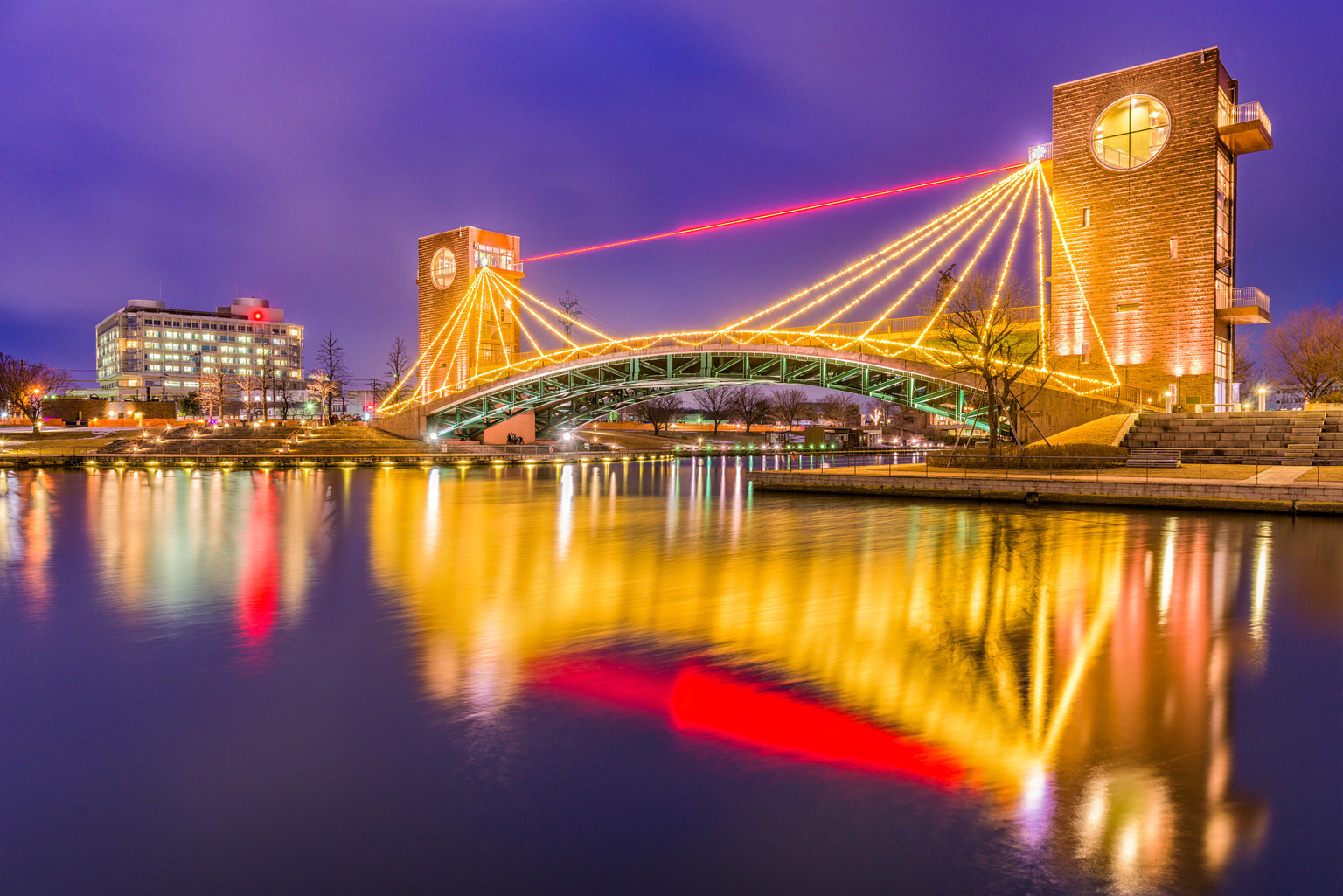
Fugan Canal Kansui Park
Inside is the Toyama Folk Museum where you can learn about the castle’s rich history including the times it was destroyed and rebuilt. We were given a short, but informative tour of the facilities by an extremely enthusiastic guide who finished things off by taking us up to the observation deck overlooking the city and the Northern Alps.
Down below is a delightful Japanese garden with tiny streams and waterfalls. It’s a perfect spot for a gentle morning or afternoon stroll – with plenty of photo ops. Other notable attractions inside the extensive grounds include a large bronze statue of Masatoshi Maeda, the second daimyo (feudal lord) of the Toyama Domain who pushed for greater access to medical care in rural areas, and the Sato Memorial Art Museum which features paintings, local lacquerware, and some traditional Japanese tea rooms.
Candlelit Cruise
Departing the park, it was then just a short walk over the picturesque curved vermillion bridge to Matsukawa River (also called Jinzu River), which was historically used as a stronghold for the castle and to play a key role in the region’s shipping industry.
A leisurely 30-minute boat ride along the river is highly recommended. The best time to do it is in spring when you can see a tunnel of cherry blossoms. Designated as one of the top 100 hanami (cherry blossom viewing) sites in Japan, there are around 460 cherry trees lined up along both sides of the water. If you can’t visit during spring don’t fret as this is a tour that’s well worth taking at other times of the year to see the luscious greenery of summer and the vibrant autumn foliage (the cruise is unavailable during winter months).
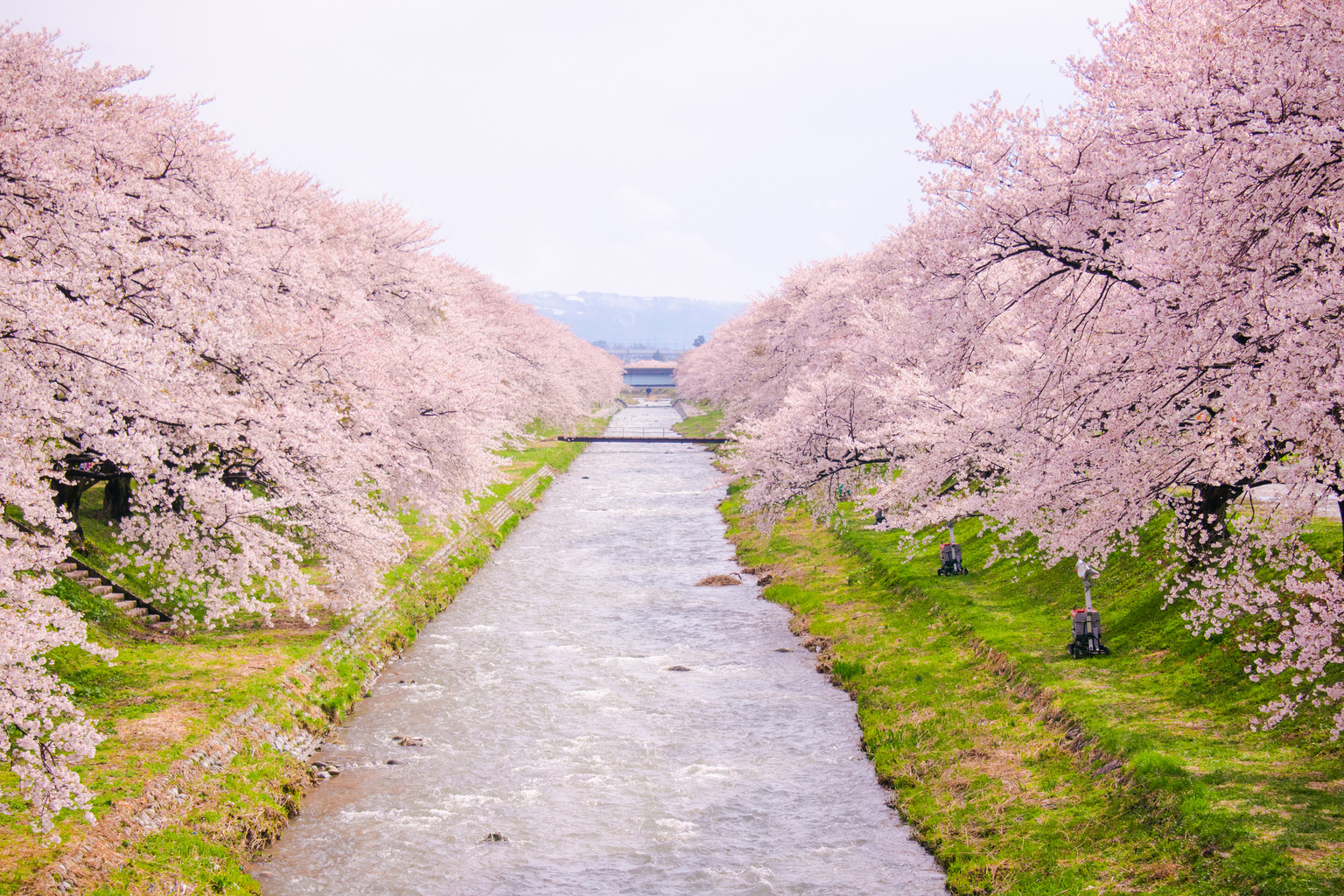
Cherry Blossom Trees Along Matsukawa River
For groups, it’s possible to reserve a private candle-lit lantern dinner cruise where you can feast on sushi and consume various kinds of alcohol. Prior to that, we had the chance to take a short break in the Matsukawa Tea Room and visit the Taki Rentaro Memorial Museum, a small area showcasing objects related to legendary pianist Taki Rentaro, who during his tragically short life composed one of Japan’s most famous folk songs, “Kojo no Tsuki” (The Moon over the Ruined Castle).
A Glass Masterpiece
A few hundred kilometers south of the Matsukawa River and Castle Park is the Toyama Glass Art Museum, a stunning building opened in 2015 that was designed by renowned architect Kengo Kuma (the man responsible for the design of the New National Stadium). Applying granite, glass, and aluminum, the exterior reflects the Tateyama mountain range, while the interior is full of wooden louvers creating a unique, stylish atmosphere.
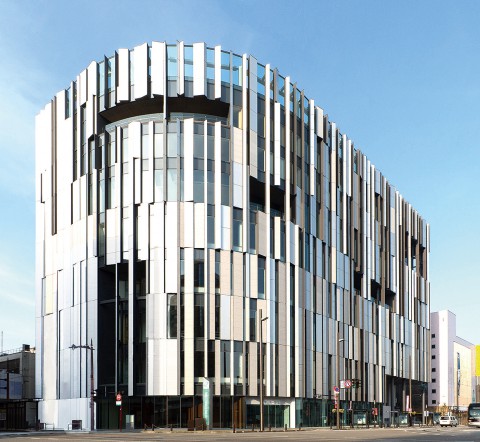
Toyama Glass Art Museum
Within the six floors you’ll find a public library, café, shops, and a number of exhibitions, both temporary and permanent, from glass artists all over the world. The biggest attraction of the museum is arguably on the top floor, which has a collection of installations from the great master of contemporary glass artwork Dale Chihuly.
Speciality Sushi, Sweets and Soy Sauce Soup
Described as Japan’s “natural fish reserve,” Toyama Bay is home to around 500 species of fish, many of which are served at the numerous sushi restaurants in the city. Pressed trout sushi (called masuzushi) comes highly recommended. Toyama black ramen, which has a distinctive black soy sauce soup, is also popular. Another of the city’s specialities is the kneaded fish paste known as kamaboko. At Umekama Museum U-mei Kan you can hear about the history of the food and observe it being made. The decorative creations are available to buy at the Umekama shop.
For those with a sweet tooth, Toyama has plenty of confectioneries. Two of our favorites were Shimakawa Ame, famed for its malt syrup candy, and Tsuki Sekai with its signature item, also called Tsuki Sekai, that’s made from eggs, molasses, white sugar, and wasanbon, a high-quality, fine-grained Japanese sugar. Both places are great if you’re looking for a gift to bring home or a delicious snack for the road.
Three More Places to See in Toyama
Kurobe Dam
Twice as tall as the Statue of Liberty, Japan’s tallest dam, which discharges more than 10 tons of water every second, can be viewed through the summer and autumn months. The dam was built between 1956 and 1963 at a cost of ¥51.3 billion. Around 10 million people worked on it, 171 of whom lost their lives during the construction. Their names are engraved on a memorial at the site.
Gokayama
A UNESCO World Heritage Site full of centuries-old steeped thatched-roof houses known as gassho-zukuri, meaning “formed like hands in prayer.” It’s an enchanting area located deep in the mountains that doesn’t feel too touristy, possibly because it isn’t as well-known as the nearby village of Shirakawa-go in Gifu, and is therefore less crowded.
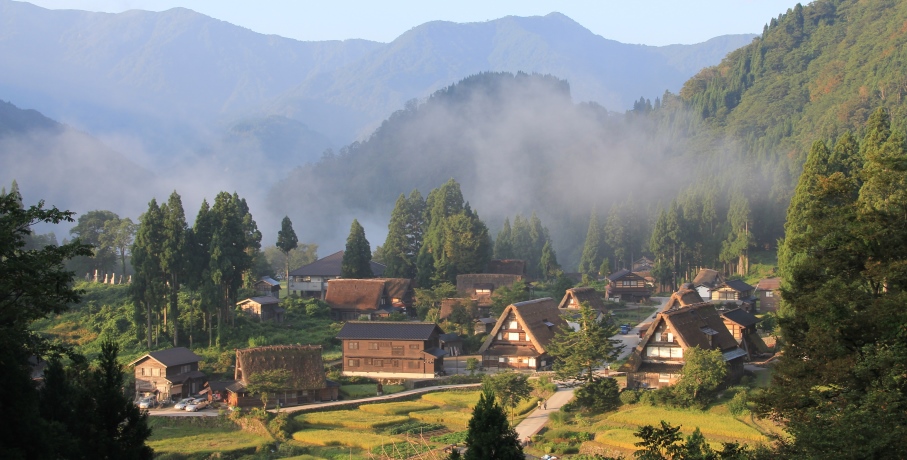
Tateyama Kurobe Alpine Route
Commonly referred to as the “Roof of Japan,” this is stunning 90km mountain sightseeing route through the Northern Japanese Alps spanning from Toyama to Nagano. The route opens in April and this is the busiest time due to the spectacular snow corridor that can reach up to 20 meters high. The alpine flowers in the summer and autumn leaves also look magnificent. The route is inaccessible between December and April.
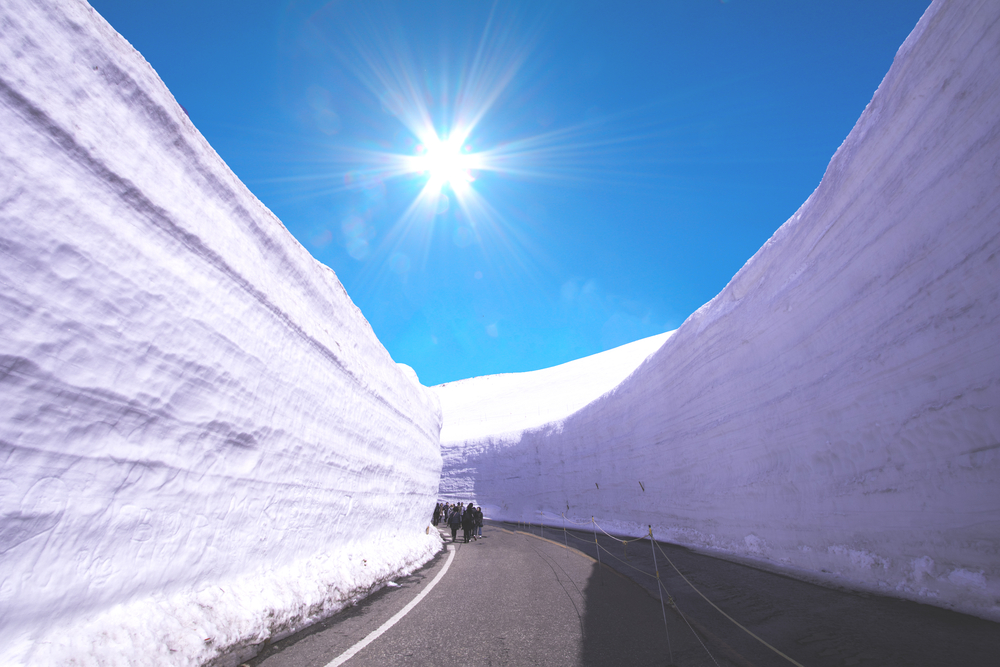
For more information about Toyama, go to foreign.info-toyama.com/en

